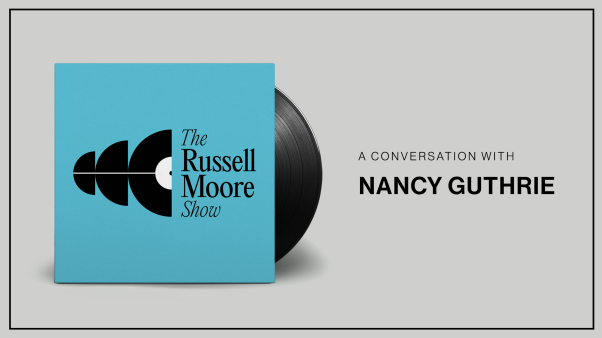That there has been a direct relationship between religion and the arts is evident from primitive times. Men have used statuary, chants, paintings, and places of worship to objectify and house his spiritual experiences. Not always so obvious, however, is the danger of making aesthetics a substitute for true devotion, of becoming so enamored with our inner responses to experiences of beauty that we turn our products of artistic creation into objects of adoration. Thus we glorify man rather than worship God. The threat of aestheticism persists wherever churches become so concerned with safeguarding ceremonial traditions that they fail to respond creatively to the challenge of the Gospel for a more constructive spiritual and social ministry. When art faithfully communicates elements of confession and exaltation, it may then serve a unique role in nourishing spiritual life.
MAN’S NEED FOR ORDER
A characteristic of man’s mind is his need for order. His artistic impulse arises from a hunger to find and re-create meaningful relationships and harmony in life. The artist labors to bring music out of sound, line and symmetry out of unrelated forms, and to proclaim reasonable order in the face of much that seems accidental or even chaotic in life. Fritz Kreisler and Albert Einstein agreed that music and mathematics have much in common; science and art both seek to objectify the inward urge for order and meaning. Plato, finding reason for relating art and science to religion, held that beauty and truth are realities in themselves to which man may become committeed in a religious attitude. For Nietzsche, religion was no more than an aesthetic response to beauty and truth; in religion, as in art or science, he contended, the wellspring of inspiration and insight is inside ourselves and not in some supernatural “cloudland.”
Practicing artists have not infrequently been among the first to assert the close relationship between their faith in God and their creative endeavor. Johann Sebastian Bach, in giving musical expression to his experience of the wonder and majesty of God’s Word, made his personal faith so contagious that even the irreligious temporarily laid aside their doubts while hearing his works. For Bach, as for Handel and other artists, the very raison d’être of art was to reveal God’s will for order and harmony in man’s disordered world. “In the architecture of my music,” Bach wrote, “I want to demonstrate to the world the architecture of a new and beautiful social commonwealth … it is the enlightened self-discipline of the various parts—each voluntarily imposing on itself the limits of its individual freedom for the well-being of the community. That is my message.”
DANGERS IN THE ART PURSUIT
Several elements of danger are to be noted as the artist agonizes over his work to make the “felt” become a tangible reality. The first perhaps is that of forcing techniques of art to serve ends they were never intended to serve. In the truest sense artists do not “create,” they can only represent, symbolize, or translate what is given. At best they can take materials such as pigment, stone, words, or musical symbols, and rearrange them in such a way as to give communicable impressions of their ideas. The ever-present danger is in substituting the artistic product for the ideal to which it relates. Beethoven, for example, tried to make his musical setting for Goethe’s Ode to Joy take the place of personal communion with his fellow men. The singing of hymns about brotherhood or the enjoyment of international art exhibits, seems to represent for many people the limit of their desire for genuine fellowship beyond their parochial horizons.
A MEDIATING MESSIAH?
Those who look to the arts as a kind of mediating messiah for fractured human relations are doomed to disappointment; that people can sing together or enjoy the same kind of poetry or sculpture does not erase the causes of tension between them. Heated competition among members of a ballet troup, supposedly dedicated to a harmonious performance, would dispel such illusions. One would hardly expect to quell a race riot by singing the national anthem! But should such a miracle occur, it would be because the combatants were already dedicated to the democratic ideal behind the song, and not because of the chord structures or harmonies.
HEDONIST TEMPTATION
A second problem relates to the fact that much of art is “escapist” in nature. It idealizes the real and fosters a merely spectator attitude toward life for the sake of protecting one’s own tranquility. The hedonist temptation is always present in art, and it draws men apart from the real issues of our pilgrimage. Since the “Golden Age” of Greece, attitudes of detachment and “apathy” (from the Epicurean apathia) have been upheld among aesthetes for whom contemplation of things beautiful becomes a necessary buffer against “the shocks that flesh is heir to.”
In the development of formal religion, the aesthetic problem is particularly evident in the demand for spiritual and mystical effects in ceremonial worship. The pastor who has struggled through the preparatory years of church building, and has held services in store buildings or school auditoriums, is familiar with the words, “We’ll join after your church is built; we just can’t get into the mood of worship in this place.” The requirement of organ music, stained glass windows, and the traditions of a recognizable sanctuary can rob us of the scriptural concept of worship and service. In mystical contemplation of abstract ideals, our practical response to God’s moral call-to-action is too easily evaded. It is easy to sing “Onward Christian Soldiers” while sitting in air-conditioned comfort, aided by a resplendent choir. It is something else to oppose with Christian vigor the racial or commercial injustices practiced in the neighborhood.
THREAT OF IDOLATRY
Art and religion together may plunge us into a morass of “symbols, echoes, and myths” in the effort to tranquilize our discordant souls. Aestheticism then becomes a new idolatry, harder to combat than the old idolatry because it is less concrete. Since art is essentially of the imagination, it imposes a devastating threat to the integrity of faith.
The European Reformers were not alone in warning against the abuses of art by the Church (wherein standards of taste were literally dictated), and against the intrusion of pagan art in Christian guise in churches where prelates were culturally illiterate. Botticelli, who became a Christian under Savonarola’s influence, destroyed all of his own paintings done prior to his conversion so that he might dedicate his subsequent work to the specific glory of God. And no less a genius than Michelangelo, who probably did more than any other graphic artist to aid the church in communicating the Gospel, wrote in a rare poetic effort:
Now know I well how that fond fantasy
Which made my soul the worshiper and thrall
Of earthly art, is vain;
Painting nor sculpture now can lull to rest
My soul that turns to His great love on high,
Whose arms to clasp us on the cross were spread.
Art’s gift to the life of the spirit is twofold. By its protest against and idealization of “the rude world,’ it can provide a needed element of confession. It can reveal the elements of beauty which the Creator intended for us to find in the same effort by which it communicates our dissatisfaction with things as they are and portrays them somewhat ideally as they ought to be.
Secondly, having reflected the truth about the world, it should as Browning said go nature one better by leading us consciously to exalt the Lord. Religious art is not merely that which portrays religious themes or illustrates biblical events. Rather it is that which, by word or music or whatever medium is employed, portrays man’s very real struggle with sin in its contemporary guises, and man’s yearning for release; which interprets God’s stern demand for justice while also reflecting “the beauty of holiness.” Such art both confesses mankind’s dilemma and glorifies the Almighty God.
Wonder-full
“I am fearfully and wonderfully made.”Psalm 139.
Who, since, has said it better
Than the faithful, pre-scientific
Writer of verse, the sensitive soul
Who paused to reflect, who saw
Himself a miracle, a wonder
To behold in a universe
Miracle-and-wonder-full.
Little could he know of the
Stranger-than-fiction molecule,
The atom, or the atom’s nucleus.
Knowing what not how
Seemed stupendous enough
To a man intent upon the source.
He called God, God; man, man;
And let the chips fall where
And in the way they always fell.
DONALD REAM
Samuel M. Shoemaker is the author of a number of popular books and the gifted Rector of Calvary Episcopal Church in Pittsburgh. He is known for his effective leadership of laymen and his deeply spiritual approach to all vital issues.










